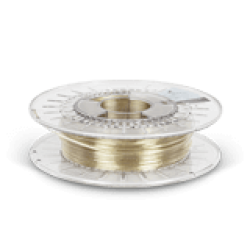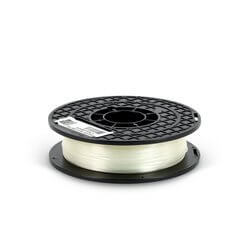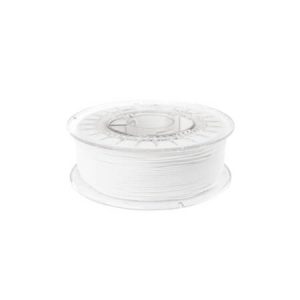- 3DGence Printers
- BigRep Printers
- WASP Printers
- Raise3D Printers
- Anisoprint Printers
- EnvisionTEC Printers
- Sintratec Printers
- 3DCeram Printers
- Nano Dimension Printers
- PostProcess Technologies
- Polyga Scanners
- Thor3D Scanners
- Raise3D Filaments
- 3DXTECH Filaments
- 3DGence Filaments
- BigRep Filaments
- EnvisionTEC Resins
- Polymer Powders
- Ceramic Pastes
Send us a Query

3DGence Filaments
Print with the same thermoplastics that you know from traditional manufacturing. Translucent, tough, resistant to chemicals or high temperatures – 3DGence Certified Material Base have them all. Every material from the base is thoroughly tested for best performance and print quality. Innovate faster with high-performance polymers or cut the costs with commodity materials, the choice is yours.

High Performance Filaments
PEEK
Polyether Ether Ketone (PEEK) is one of the most desired high-performance polymers. Exceptional mechanical and thermal properties and high chemical resistance make PEEK to be considered as a substitution for aluminium. It’s one of the strongest materials that can be used on FFF 3D printers.
Typical applications include the automotive, marine, nuclear, oil-well, electronics, medical, and aerospace industries.
- Elements of machines and devices
- Medical applications
- Elements of aircraft interiors

PEKK
PEKK is a high-performance polymer of a PAEK family with a wide application range. This material is often used as a metal replacement due to its exceptional properties and is highly versatile: it combines chemical resistance, flame retarding properties and the mechanical properties which are one the highest of all known thermoplastic materials.
Typical applications include the automotive, marine, nuclear, oil-well, electronics, medical, and aerospace industries.
- Elements of machines and devices
- Medical applications
- Elements of aircraft interiors

ULTEM
ULTEM™ is a high-performance polymer that is widely utilized in the most demanding market segments that include railroad, aerospace, automotive and medical industry. Its unique properties include high-temperature resistance, even up to 180ºC, resistance for natural and synthetic solvents, high dielectric strength and good thermal conductivity.. 3D printed ULTEM parts are used as metal parts replacements.

Advanced Engineering Filaments
CoPA
PolyMide™ CoPA is based on a copolymer of Nylon 6 and Nylon 6,6. Filament characterized by excellent mechanical strength, hardness and thermal resistance (up to 180° C).

PA-CF
This industrial material is highly chemically and heat resistant. Comparing to standard polyamide (PA) material, the carbon-filled nylon is less susceptible to thermal shrinkage. PA6 is the base of this filament and there is about 20% addition of carbon fibres.

Nylon 680
The material is approved for contact with food.

PC-CF
High-quality polycarbonate filament that is reinforced with the carbon fibre, that features a very high strength to weight ratio. Used as a construction material of high tensile strength, rigidity, and dimensional stability. Thanks to the glass transition temperature of 143C the thermal resistance of PC-CF is one of the highest among the 3D printing filaments.

PC
PC is one of the most durable, hardest and heat resistant engineering grade polymer. High dimensional accuracy, increased rigidity and impact strength makes the material particularly suitable for the production of demanding and robust models. Polycarbonate is also an electrical isolator.

PC-ESD
PC-ESD is an advanced compound produced using multi-wall carbon nanotube technology and a highly precise extrusion process. The material is ESD-Safe thus it can be used in critical applications that require electrostatic discharge protection. PC-ESD prevents the accumulation of the electrical charge on the model surface and as the consequence prevents uncontrolled discharge. It has great mechanical properties.

PC-ABS
PC/ABS is an acrylonitrile butadiene styrene and polycarbonate copolymer and it combines the features of both polymers. This is a 3D printing material of increased impact strength (comparable with PC), increased heat resistance and decrease moisture absorption. It is suitable to print the models that work in wide temperature range applications.

Fiberflex
Fiberflex is an elastomer filament with the Shore hardness of 40D. Fiberflex 40D has high impact resistance in low temperatures and very good thermal, chemical and abrasion resistance.

InnoFlex 60
Innoflex 60 is stiff, flexible, rubber-like elastomer material with with Shore hardness 60D.

Flexfill 98A
Flexfill 98A is a semi-flexible filament that offers specific mechanical properties. High tear and tensile strength guarantee the durability of 3D printed products. The material is based on polyurethane which offers highly reversible deformation, resistance to ozone, oils, greases, and good transparency. Properties are stable also thanks to improved UV stability. It has high abrasion resistance and rebound resilience. Printing with 100% infill ensures a tough object. Material has resistance to a wide range of temperatures. This material is ideal for dynamically stressed parts, like belts, shoe outsoles, wheels, grippers or flexible covers. It can be used for the production of electrical and electronic equipment. The use of the material in the food or medical industry is not recommended. Available in multiple colours (Beige, Grey, Red, White, Black, Natural).

Commodity Filaments
ABS
ABS is one of the most popular thermoplastics, regardless of production technology. It allows printing complex geometries, functional prototypes and many more. It is always easy to process and it has good mechanical properties to price ratio. ABS is a machinable material – it is possible to make the technological holes and even threads on the printed model. Relatively high hardness of the material results in high scratch resistance. ABS shows some basic chemical resistance for acids, alkalis, and alcohols. It can be used in the applications that work in the temperature range of -20 – 80C. ABS is a recyclable material. Available in multiple colours.

ASA
ASA is the thermoplastic polymer which combines good mechanical properties, UV resistance and the water resistance. The high level of dimensional stability and good chemical resistance makes ASA suitable for prototyping, outdoor applications and various applications in automotive industry. Available in multiple colours.
Applications:
- Housings, components exposed to UV radiation
- End products, car body elements

PLA
PLA is a biodegradable thermoplastic polyester made from renewable raw materials. One of the most popular materials used for 3D printing. PLA is not resistant to increased temperatures as well as have very limited resistance for all aggressive chemical substances. Available in multiple colours.
Applications:
- Housings of electronic equipment, household appliances parts
- Car components (trusses, buttons, internal fittings, wheel arches)
- Sports equipment, elements of firearms, furniture components, fancy accessories

Smart ABS
Smart ABS filament is characterized by high impact resistance. An additional advantage is also the low level of material shrinkage during printing. One of the biggest advantages of this material is the high gloss of the print surface and the possibility of machining (grinding, drilling, threading).
Applications:
- Enclosures for electronic equipment, household appliances
- Car elements (trusses, buttons, internal fittings, wheel arches)
- Sports equipment, elements of firearms, furniture elements, decorative accessories
- Office, optical, photographic technique, toys.

PP
PP is a popular 3D printing polymer that offers excellent print quality, high fatigue and mechanical strength as well as good thermal resistance. Prints made of PP are suitable for end use applications thanks to low friction coefficient and nice, smooth surfaces. PP features also high electrical resistance thus the prints can be used as the electrical isolators. PP has a great durability and strength to weight ratio.

Support Materials
ESM-10
3DGence ESM-10 is a first soluble support material for high-performance polymers. The filament is characterized by high chemical compatibility and adhesion to PEEK and ABS materials. Also, its features enable the support structure to be stable when working in a heated chamber, where the inner temperature may be higher than 80°C. Clear the supports without the risk of damaging the model. Soluble support materials like ESM-10 can be automatically dissolved in dedicated cleaning stations.
Applications:
- Printing out the models with very complex geometries in which mechanical removal of supports is difficult or impossible.

BVOH
Water-soluble high-quality support material that can be used with many different polymers. Easily soluble in water. This environmentally friendly material is a support when printing items with overhanging and especially complex structures. The BVOH filament guarantees excellent forming and adhesion properties.
Applications:
- Supporting material for models with complex geometry in which mechanical removal of supports is impossible or difficult.

HIPS
HIPS is a polystyrene-based polymer similar to ABS but its mechanical properties and general resilience are slightly higher. Properties allow it to be used as a model material, but also as a support for other materials. It is easy to paint, it can be processed. It is also food-safe, non-toxic, fully recyclable and non-biodegradable.
As the support material is can be easily removed without the need for any further post-processing and providing high dimensional accuracy and high surface quality. HIPS is soluble in D-Limonene which allows us to use it as the support material for complex and demanding prints. HIPS works very well with the ABS.
Applications:
- Support material
- Housings, covers, figurines

